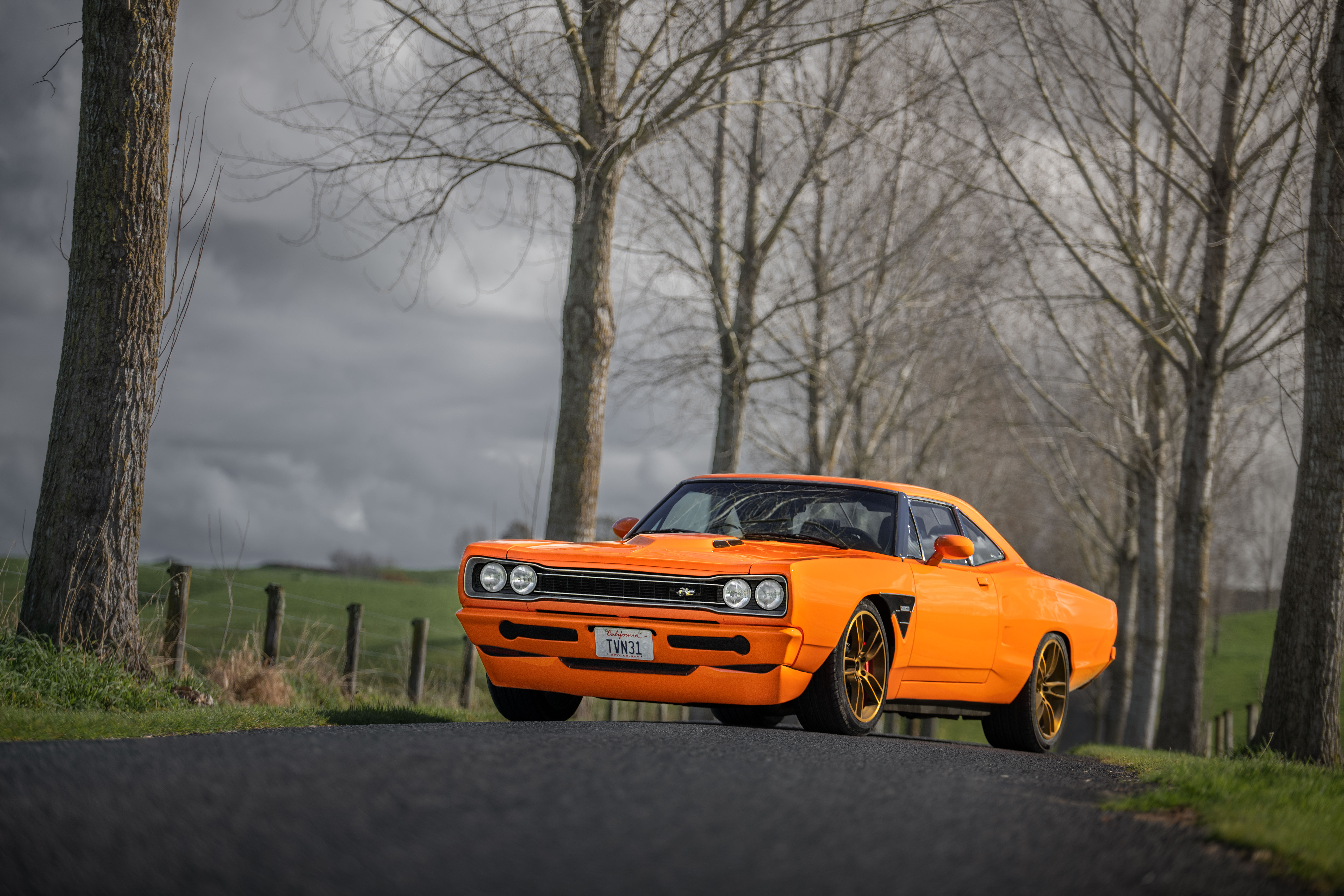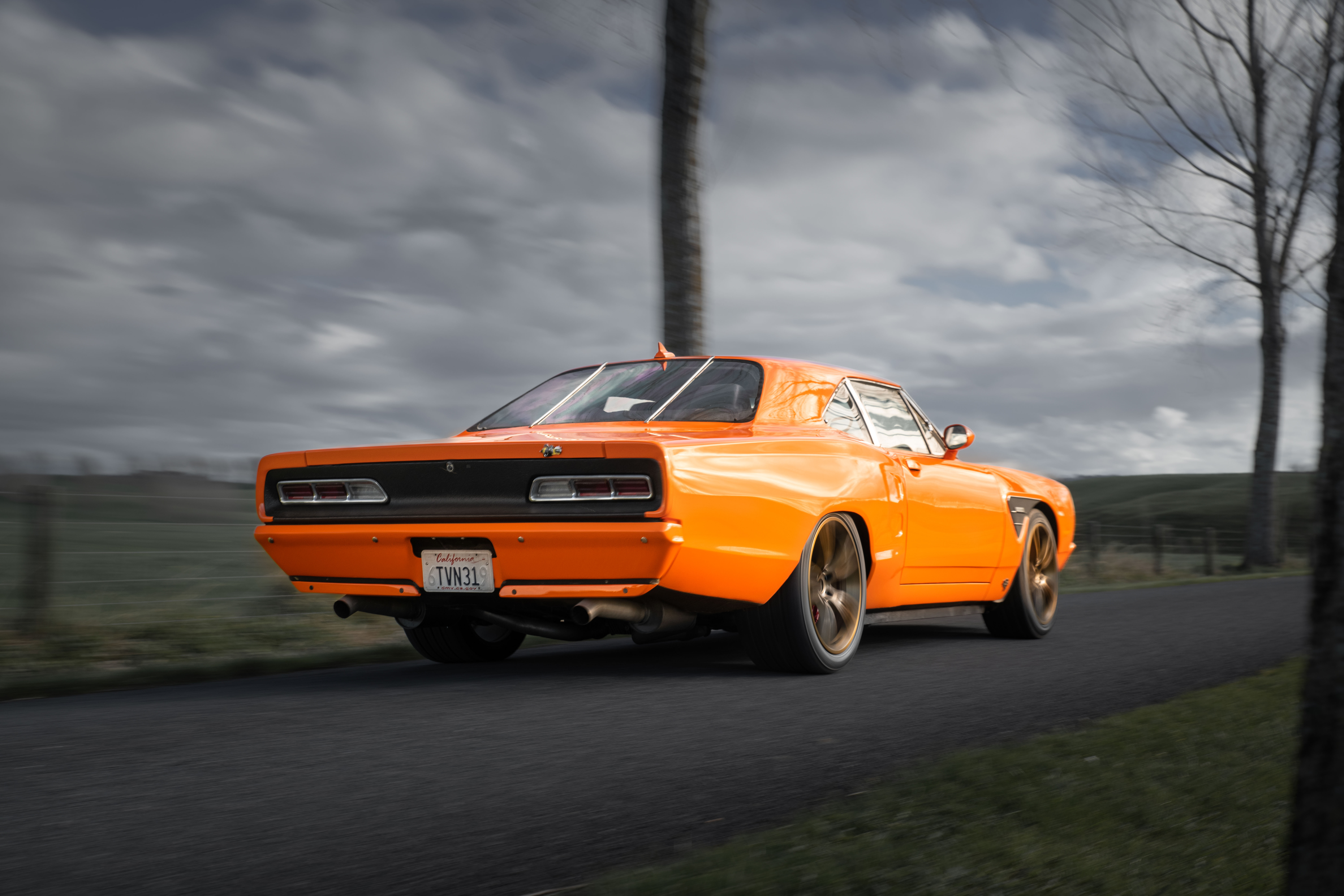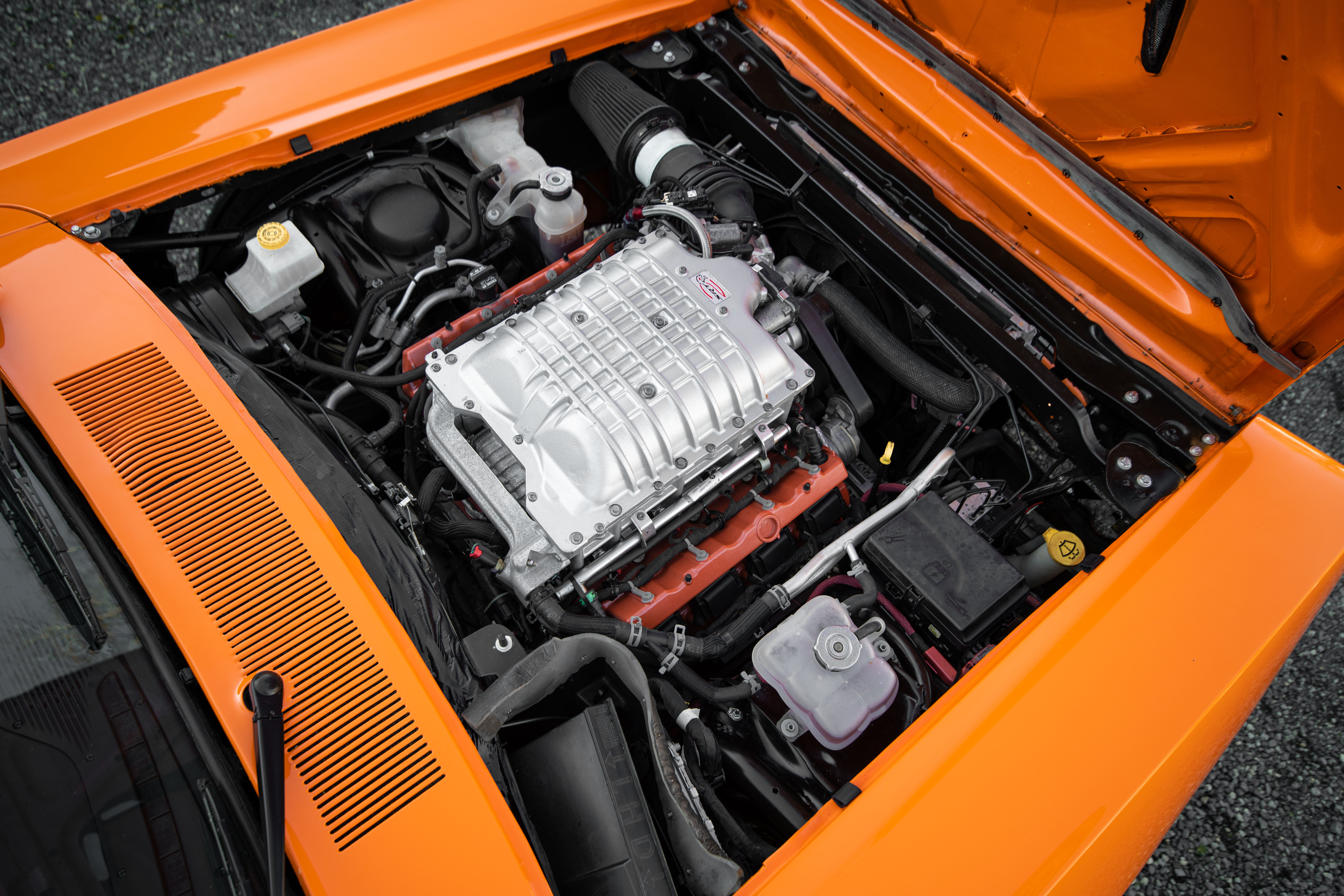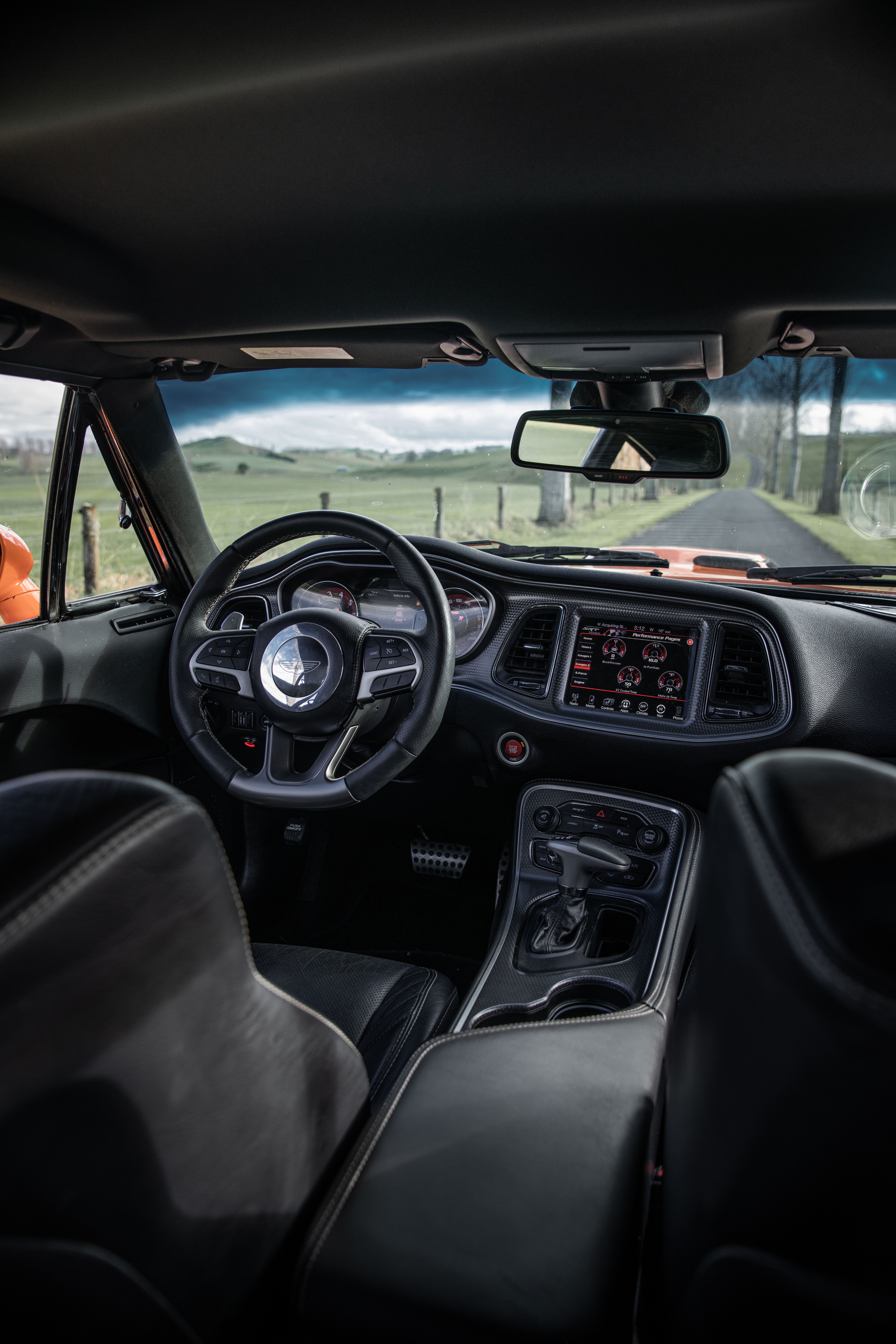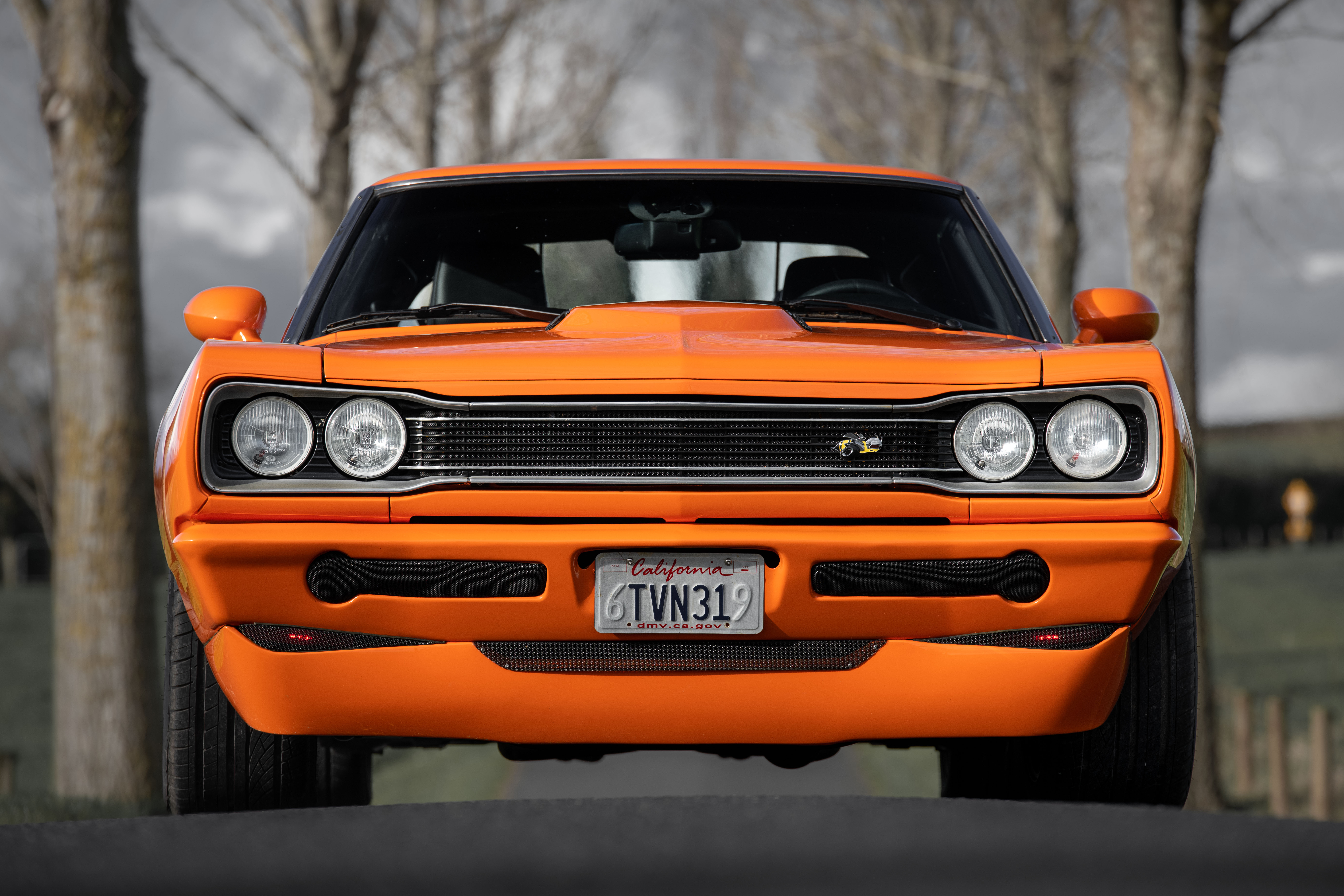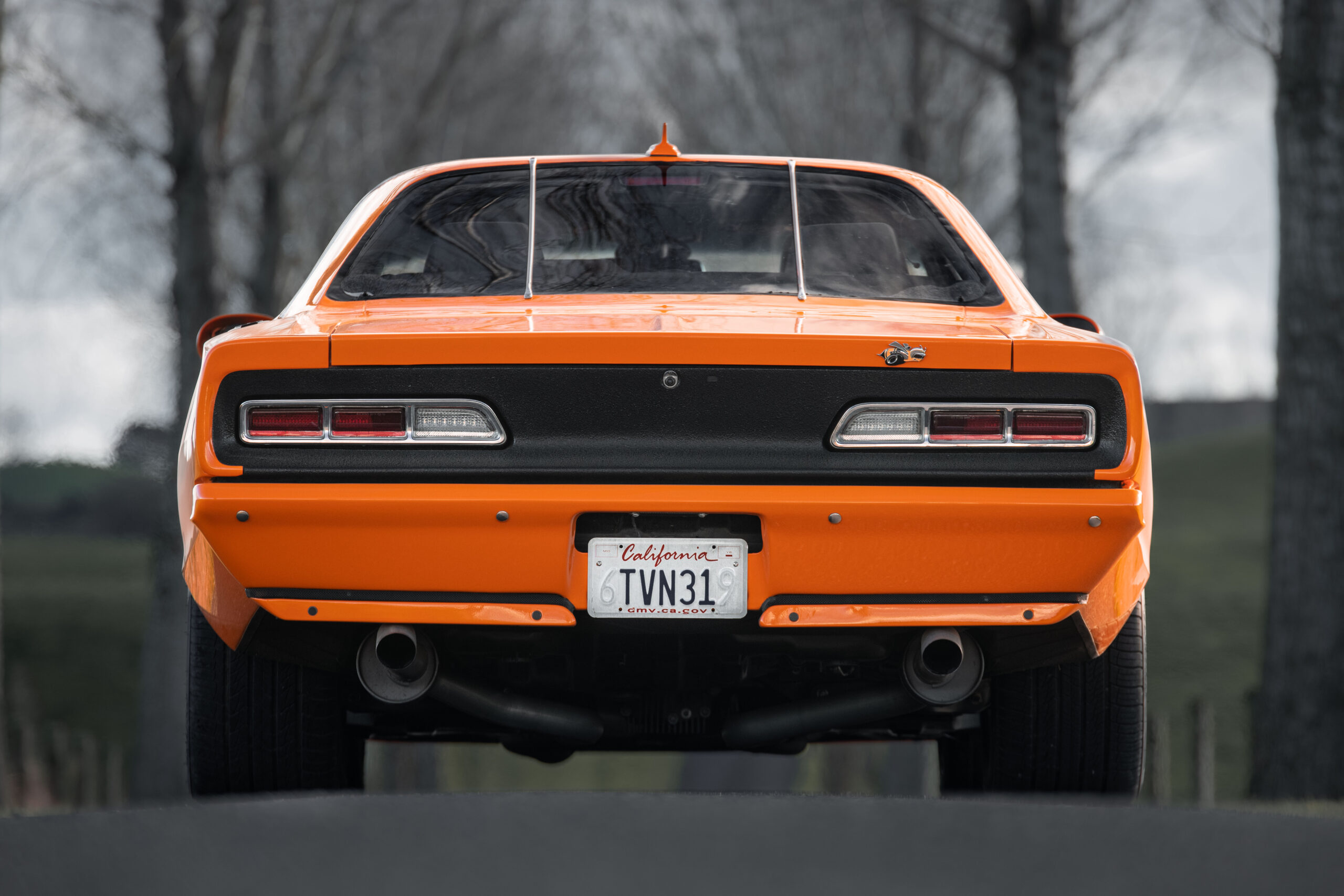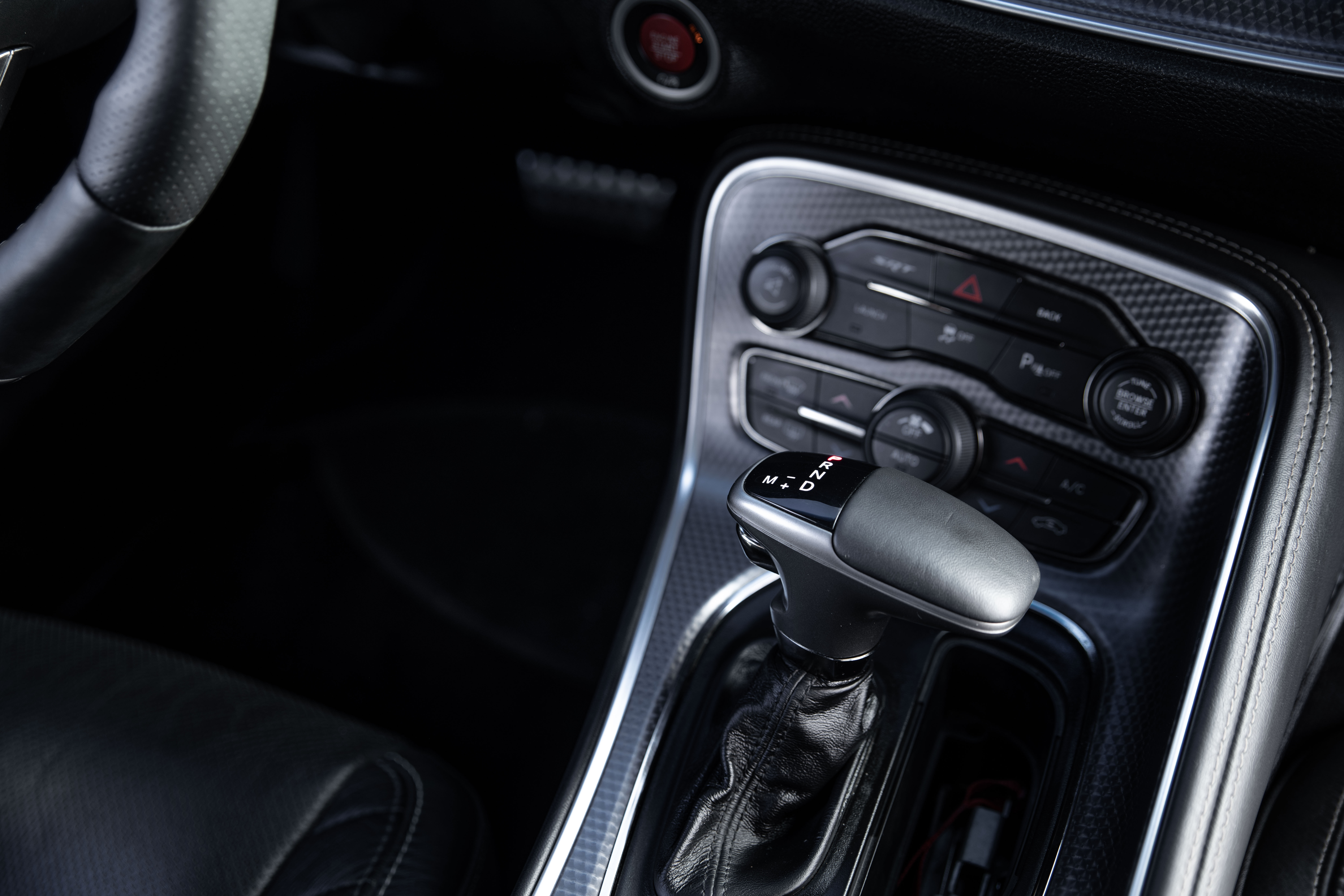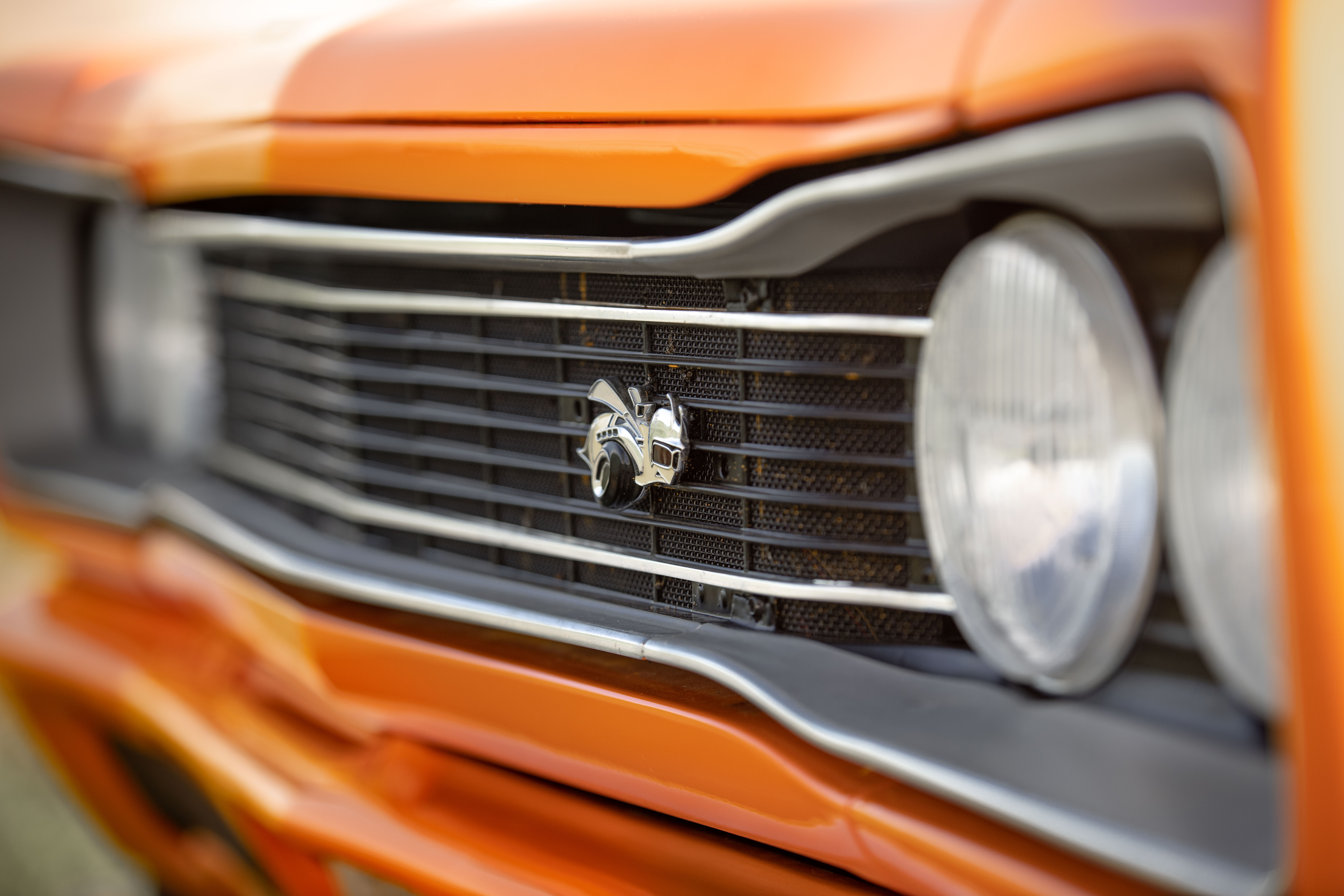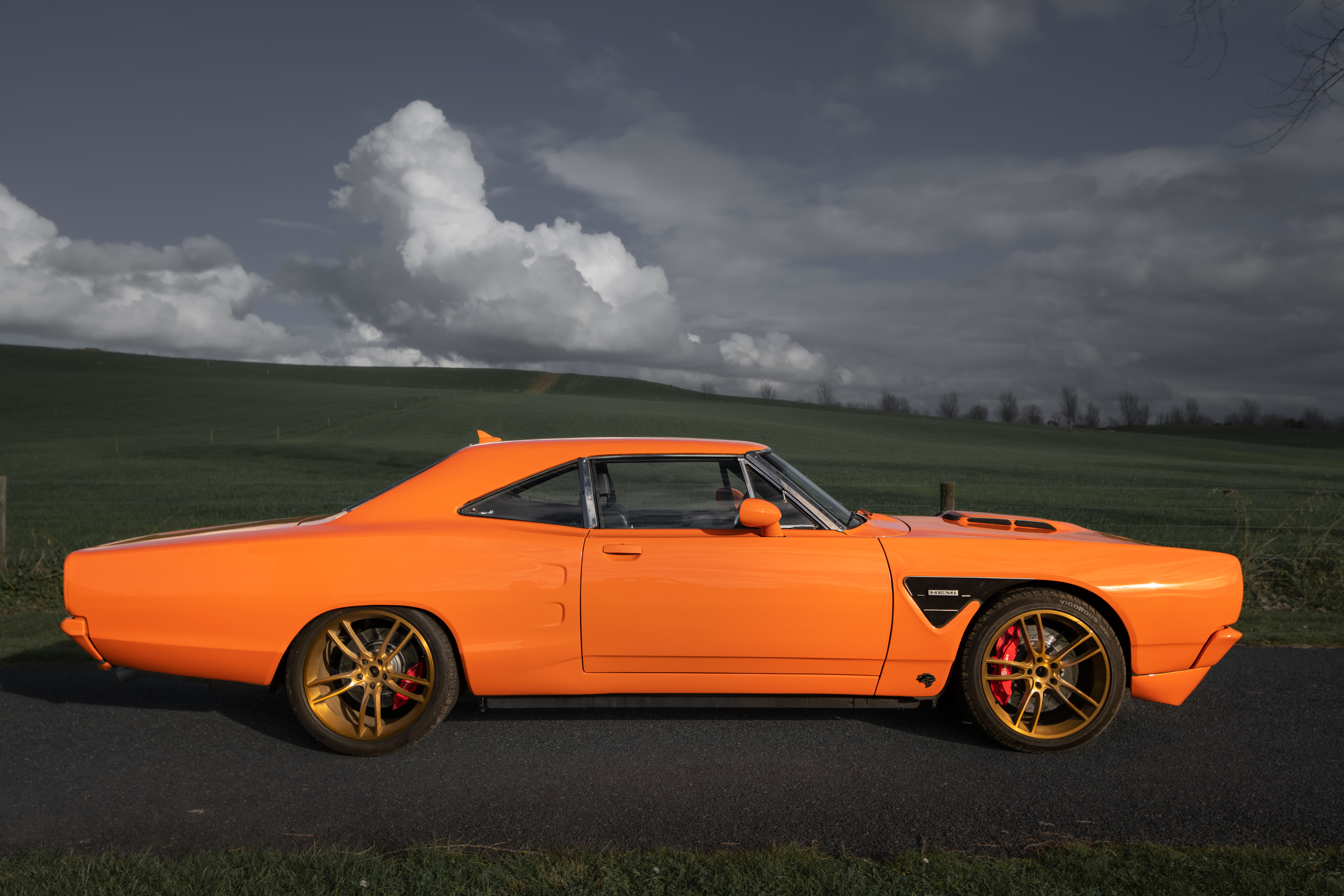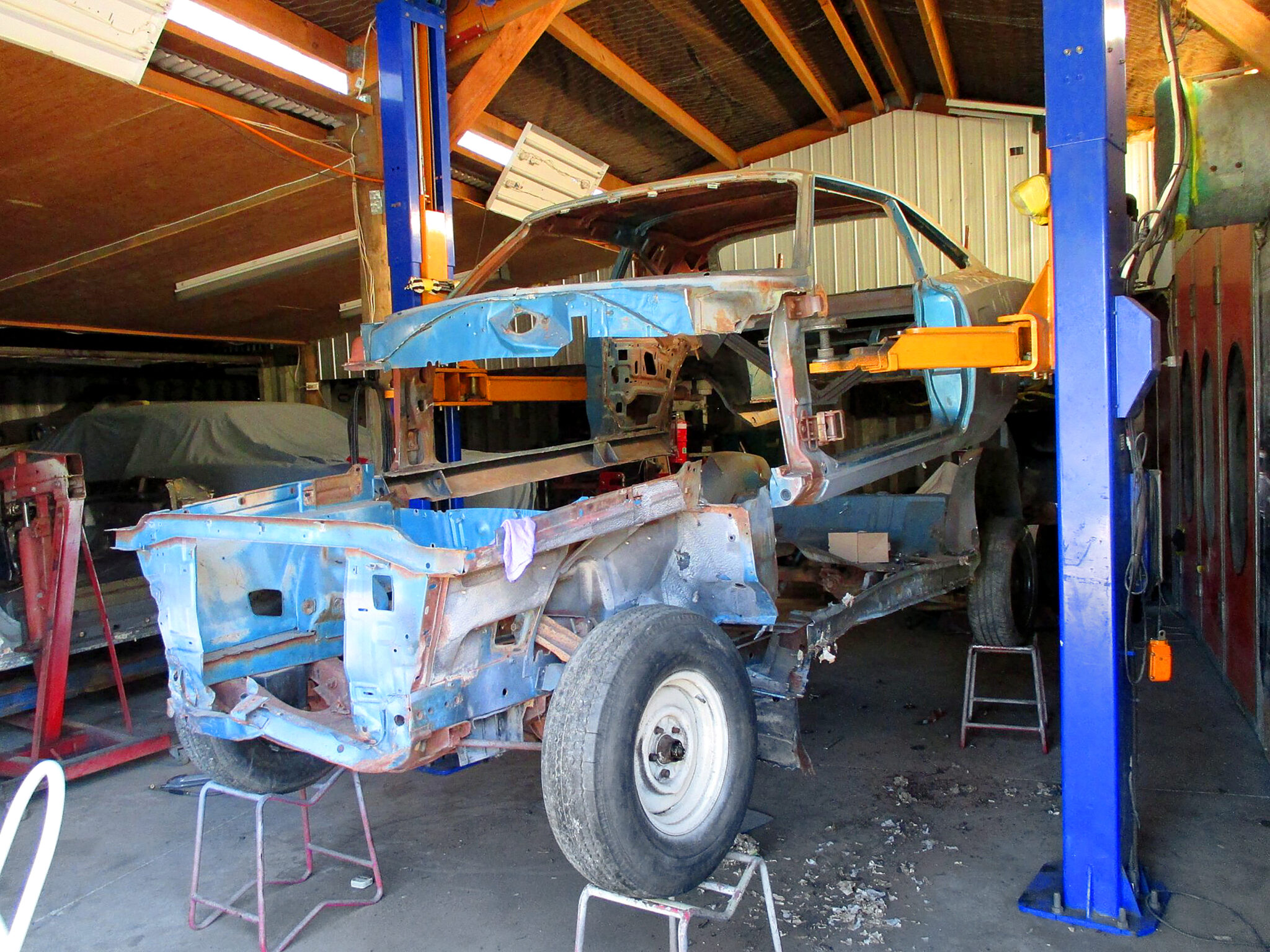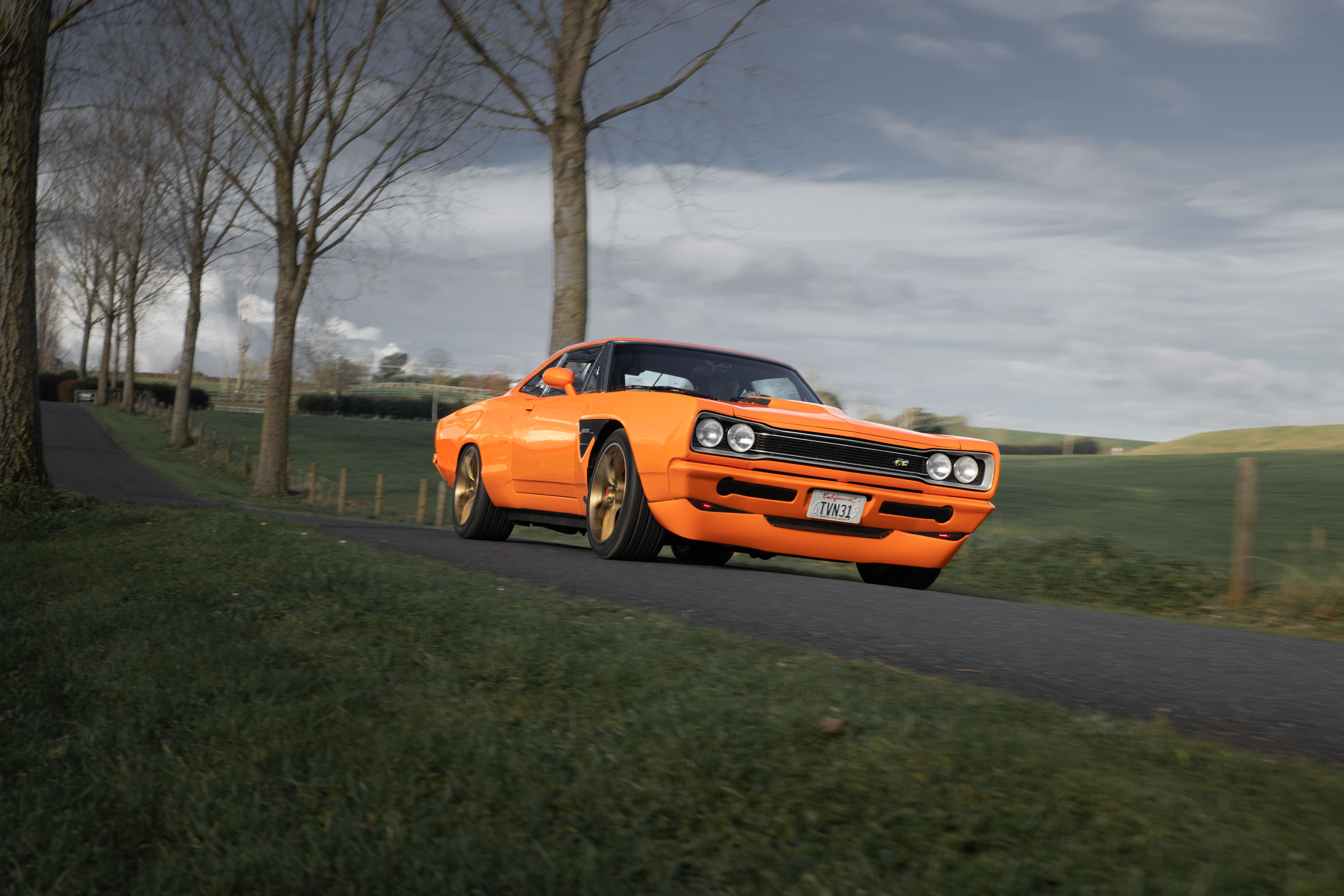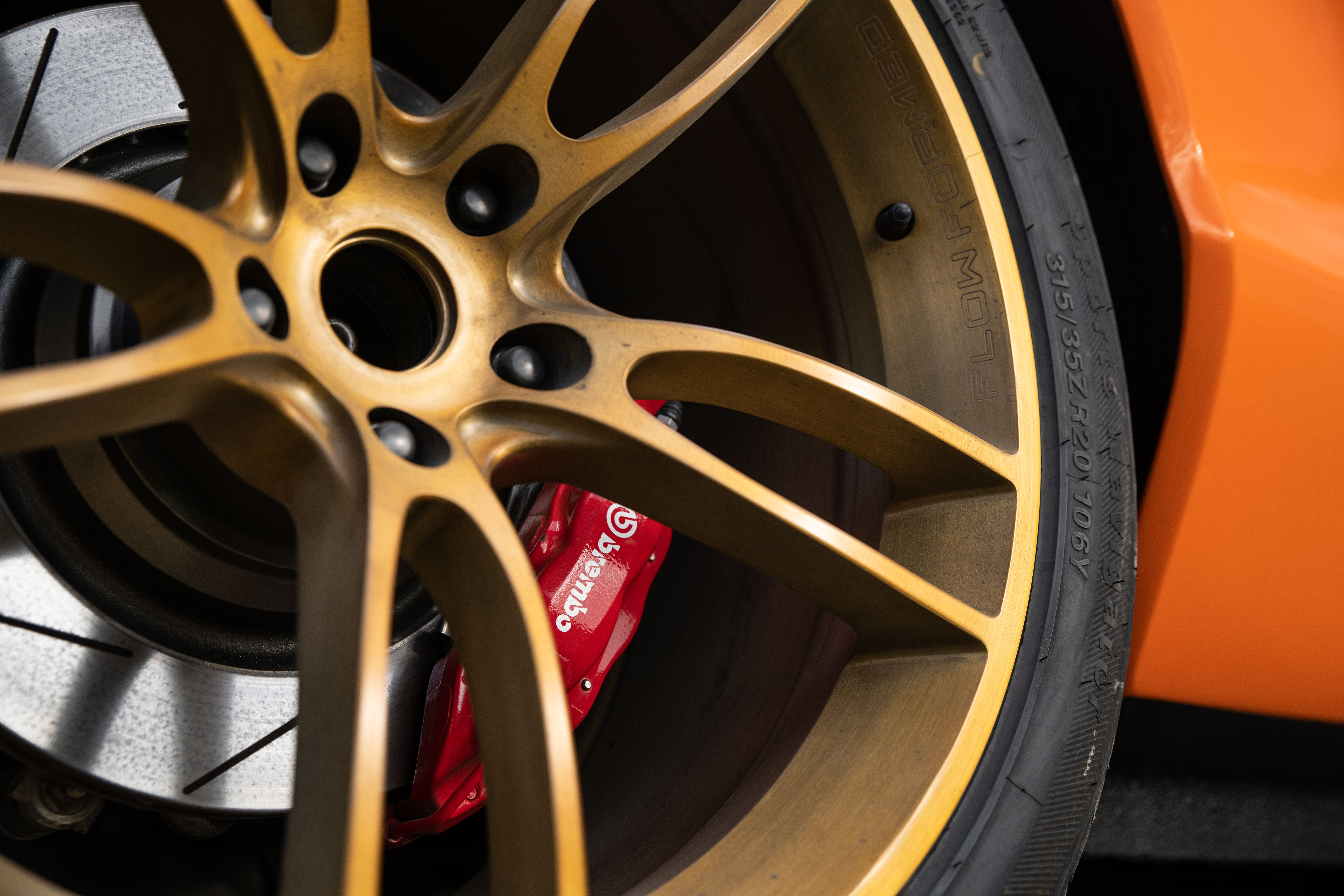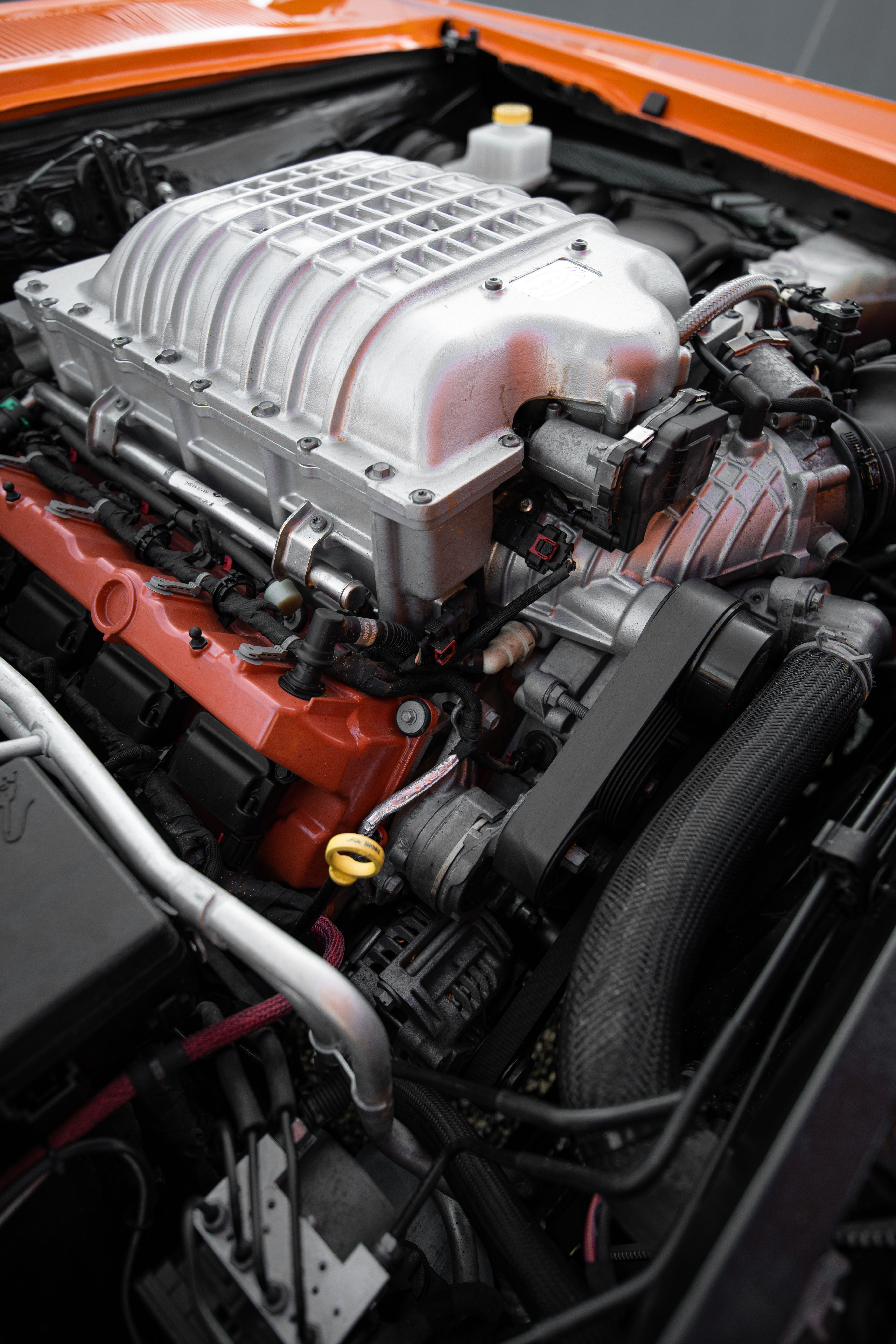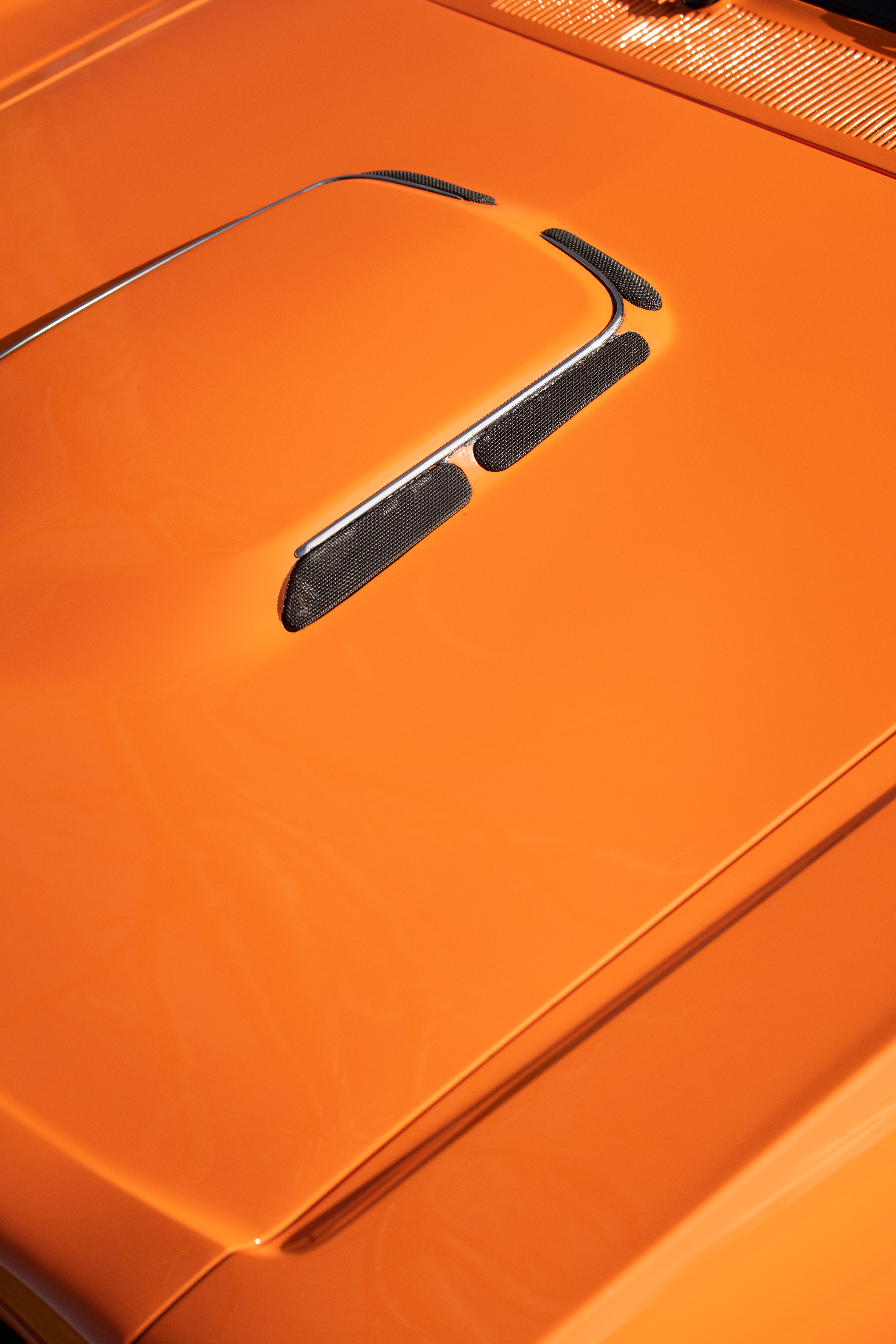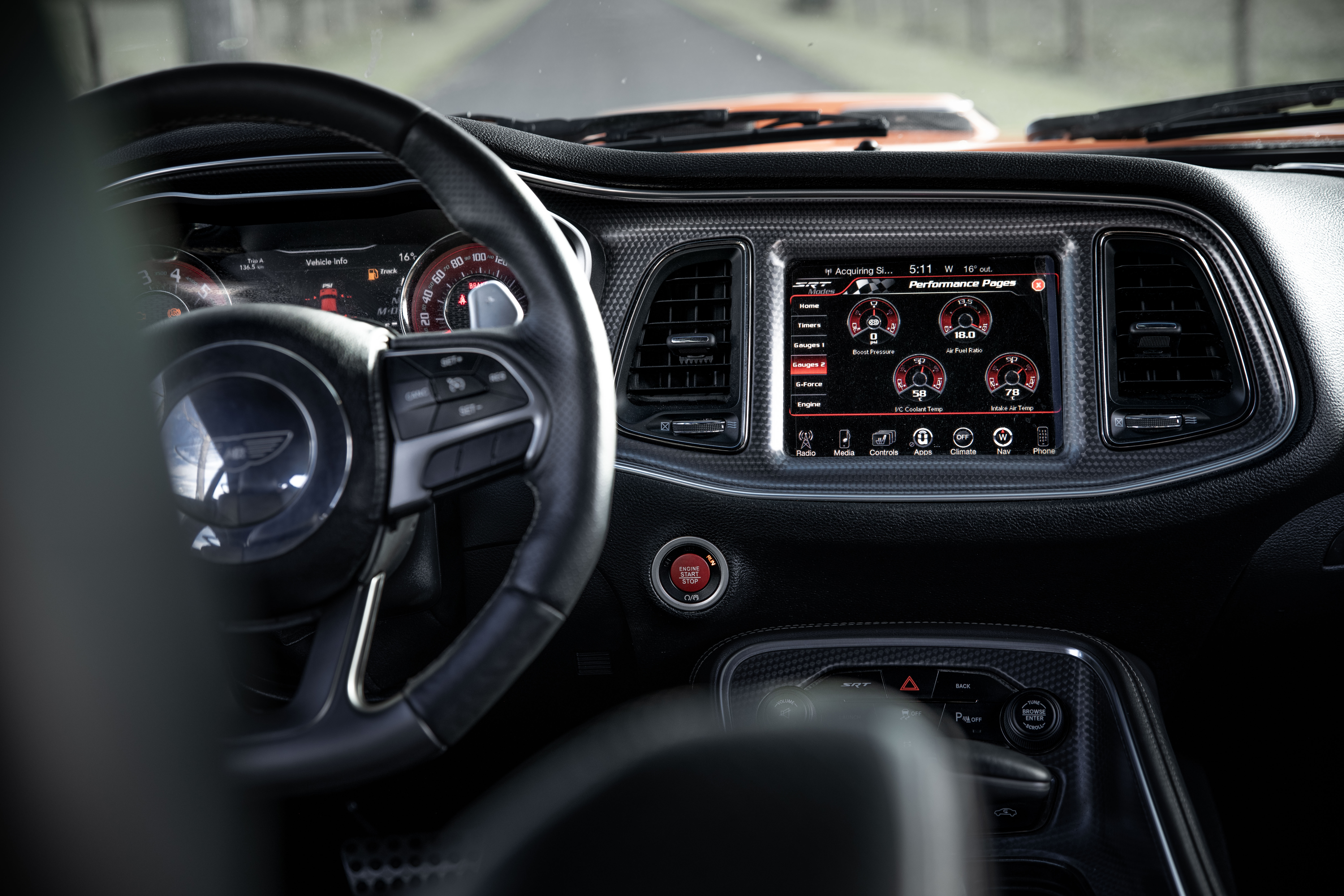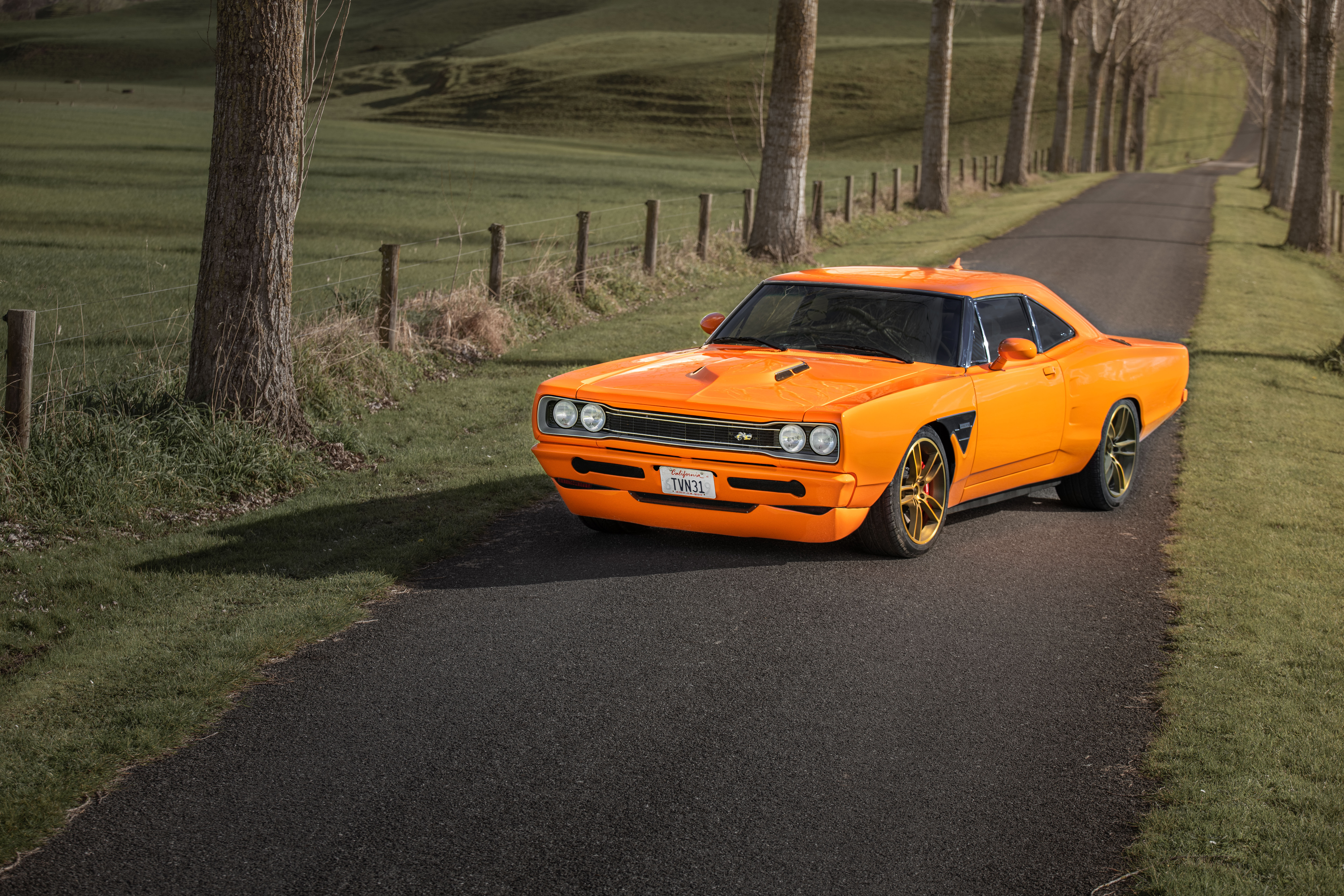Words: Todd Wylie Photos: Liam Dijk
When is an old car not an old car? Or, when is a new car not a new car? These questions can be harder to answer than you’d think, as is the answer to why Ian Kenyon took a 2016 Hellcat Challenger and combined it with a 1969 Dodge Coronet.
“There’s absolutely no logic to it at all,” he laughs when he answers our questions about how this madness all began in his well-known Pommy accent. But, despite that statement, there kind of is; in fact, there’s a whole lot of logic to combining the two vehicles that can’t be argued with — assuming, of course, you’re not the one paying the bills.
Ian purchased the 2016 Hellcat from the South Island, complete with front-quarter accident damage, without any real clear intentions for it. Not too long after he had the car back home in Matamata, the world went into lockdown, meaning that he was soon stuck at home. As the proprietor of Obsession Musclecars, and as the owner/hoarder/builder of numerous Mopars, Ian also happened to have a 1969 Coronet rolling body sitting in the home workshop waiting for some love. With these two cars sitting in the shed, it didn’t take long for the cogs to start turning and a few basic measurements to be calculated.
While the idea was percolating, Ian first knew that he needed to try to get the Hellcat to fire up, as he purchased it as a non-runner — something that probably kept other bidders away and the price down. While it would be easy to assume the type of person who takes on a project with a car like this that’s packed full of electronic everything is someone who keeps up with tech, that couldn’t be further from the truth. Ian’s a self-confessed technophobe. But, what he lacks in tech knowledge, he more than makes up for in his ability to craft some of the finest vehicles the country has ever seen, including numerous previous NZV8 cover cars. However, those cars are, for the main part at least, more classically oriented, with minimal electronics, even if they do have big Hemis or similar high-performance engines in them.
First things first though, as the Hellcat was bought with one front strut tower and the suspension assembly ripped off, so he needed to get it to be able to roll around the workshop. For this, he grabbed an old Escort front strut and some tube and threw a wheel on. As the seller wanted the car’s three good wheels back, and the only wheels he had on hand were 15-inch items, he also needed to pull the callipers and rotors off it to allow the small steel wheels to fit. Ian was convinced that the reason the dash would light up and all the electrics worked but the car wouldn’t run must have something to do with the crash impact. Maybe it had triggered some sensors, or similar. He spent days trying to work it all out, going through every setting in the car’s computer, checking every sensor and every wire. He was almost ready to give up, when he was under the car and happened to put his hand on the main starter cable wire into the fuse box.
The cable, complete with ring-terminal on it fell into his hand … yep, someone had undone it from the main fuse box and slid the cable back into where it looked like it was attached. While it was obviously a free fix, it had taken a few days to find it!
The one thing that Ian hadn’t considered when he got it fired up was that putting it into gear would see it firing out of the workshop at speed … and the brake rotors and callipers were still sitting on the bench. After lots of swear words and a few close calls with the side of the house and a steep bank, the car was back in the shed, no more damaged than it was originally. Now that he knew it ran, the upshot was that his idea of performing a ‘unibody conversion’ could begin.
If you’re not familiar with the concept, it’s using the whole platform, running gear, suspension, and brakes from one car and essentially dropping the body of another over the top. It’s a smart way to get modern handling, braking, and chassis strength into a car, rather than throwing in a new motor and hoping for the best. After all, we know that manufacturers put millions of dollars of R&D into the build of vehicles, especially ones like a Challenger Hellcat that, at the time of original sale, was one of the most powerful production cars on the planet.
Although the B-body platform cars like the ’69 Coronets look like big cars, in comparison to modern vehicles, they’re a whole lot smaller. Ian’s measurements showed this to be true, with the Coronet having a four-inch-shorter wheelbase than the Hellcat. He says that if he knew what he knew now, he’d have shortened the floorpan of the Hellcat, but not knowing what he didn’t know, he decided to extend the wheelbase of the body instead. Before getting that far though, he had to cut the body off both vehicles, leaving the Coronet as just a shell hanging from the hoist and the Hellcat as a rolling platform complete with engine.
Given the damage to the Hellcat, and with Ian not having a chassis machine in his home workshop, he worked out the best way to repair the damaged chassis rail was to cut it off at the firewall and fabricate his own rails instead. As this left the platform without any strut towers, he set about sourcing a late-model Jaguar front clip to graft in. During the hunt, he came across a 2004 Ford Crown Victoria front end instead, which is essentially the same (as Ford owned Jaguar at the time), but even chunkier, and with the added advantage of being left-hand drive too.
The Crown Vic set-up is the only part of the build that isn’t Hellcat, as Ian spent literally thousands of hours grafting everything from 2016 into a shell from 1969. In his own words, “every part of every thing was modified”, and having had a good look at the car up close, he’s not exaggerating. One of the biggest challenges was getting all the late-model parts into the doors of the Coronet. That didn’t just include the electric windows but also the central locking, including proximity key sensors and the set-up to drop the windows a fraction as the doors are opened. The inclusion of Hellcat parts like this is throughout the whole build, meaning it really has become a 2016 Hellcat with a different outer skin.
Obviously, there’s a ton of custom bodywork that has gone into the project, some of it to match the car’s modern persona, but in large it’s to incorporate the larger footprint of the Hellcat. The rear quarters, for example, don’t just have the wheel opening shifted rearwards; they also sit wider than factory too. The flow-on effects from this meant that the bumpers needed to be modified as well, and so on, and so on. During this process, Ian managed to integrate the Red Eye side emblems that, as per the Hellcat, even light up.
The plus side of the conversion is that mechanically everything — and that’s absolutely everything besides the front suspension — is Hellcat.
That includes the 6.2-litre (378ci) supercharged Hemi engine, eight-speed electronically controlled automatic transmission, and the whole rear-end assembly. The cooling systems alone on the Hellcats are significant, with numerous cooler fans and electronics all working together to ensure factory reliability while making mega power. The massive 15.8- and 13.8-inch brakes that couldn’t fit under the small wheels were refitted with equally as ridiculously sized callipers on both ends. Over these, Ian fitted 20×10-inch and 20×11-inch BGW Daytona wheels to fill the modified wheel openings. Looking at the car on the hoist from underneath, you’d swear it was a late-model Hellcat, and, well, it is, with even the exhaust system remaining ‘stock’.
While there’s a heap of metal mastery that has gone into the build, enough to even push Ian to his limits, it’s the electronic side that saw him step outside his comfort zone. He’s been quite clever with how some of the parts have been integrated. Take, for example, the tail-lights, which, from the exterior, look like ’69 Coronet lights but are 2016 Hellcat sequential LEDs internally.
The interior also contains all the Hellcat creature comforts, such as electric seats, full touch-screen display, and wraparound dashboard. From the inside, you’d also swear that you were driving a Hellcat, and again, to be fair, you kind of are — the car doesn’t know that it looks any different from what it should. That means that the remote start still works, as does the high-performance ‘red key’ option to unlock the SRT menu and performance options in the computer. Even the reversing camera, parking sensors, and safety features all work as they should, although that’s not been plain sailing to achieve, as initially the car threw up a ton of warning lights and error codes. One by one, though, Ian’s worked his way through them to the point that there’s only a couple of very small items left to sort. Not being a computer guy, he’s hugely grateful for the assistance of Dave Green, with who he’s managed to bounce ideas around, along with Craig Tomalin, who’s given a hand with a few engineering items.
At the start of the build, Ian figured that if the unibody conversion didn’t work out, he’d just pull the Hellcat motor out for another project, but, despite plenty of hurdles along the way, it has all come together flawlessly. There’s been plenty of learning along the road, and, while he’s not exactly keen to start another similar job currently, he now knows plenty of things he’d do differently if he was to. The results are impressive too. The car starts by remote, produces 730hp, stops, turns, and behaves like a modern supercar, but does it all while looking like a modernised version of one of the finest muscle cars to ever roll out of Detroit.
_______________________________________________________________________________________________________
This article originally appeared in NZV8 issue 217





